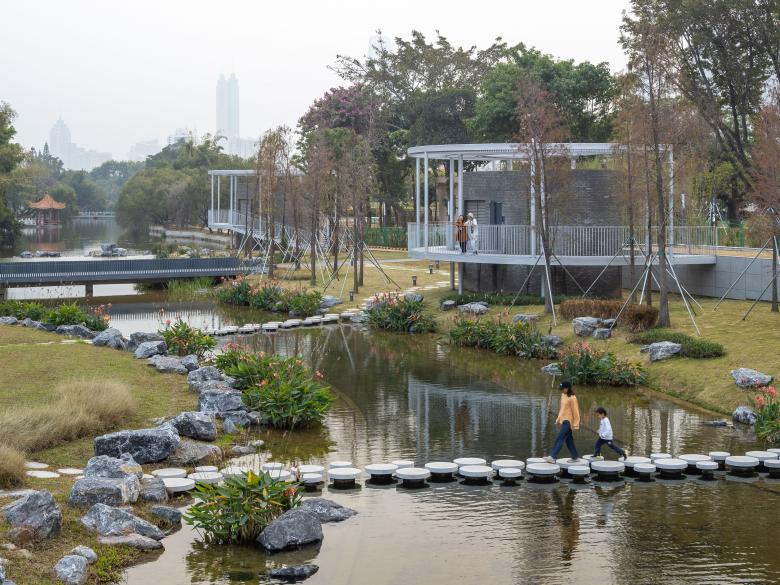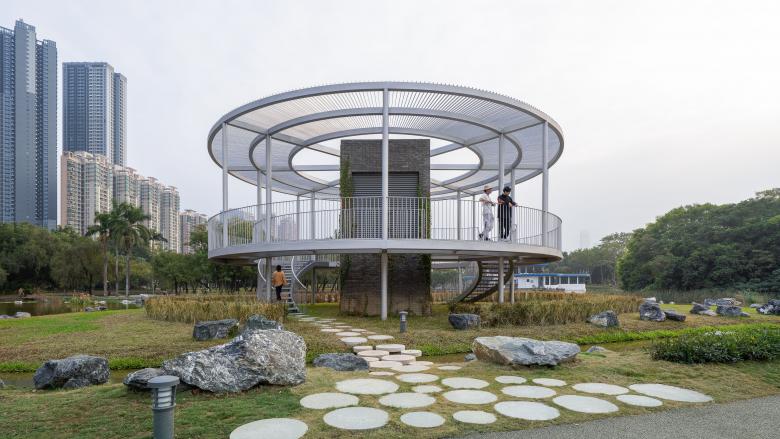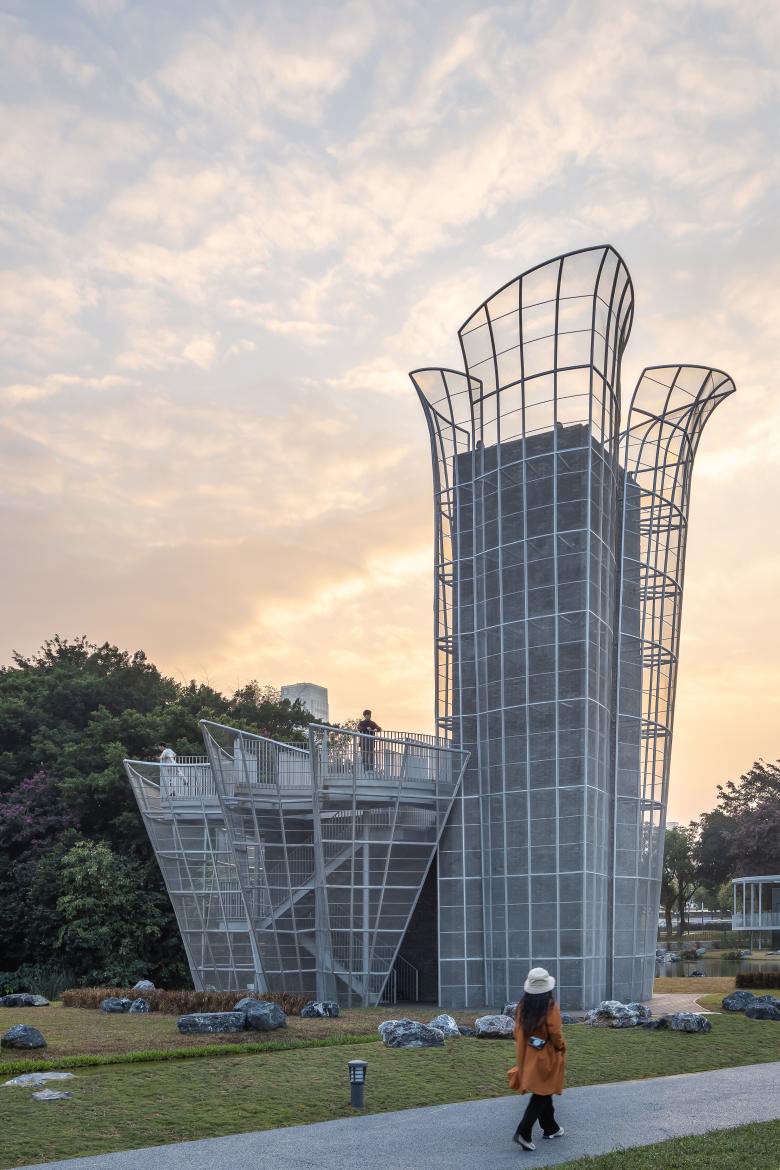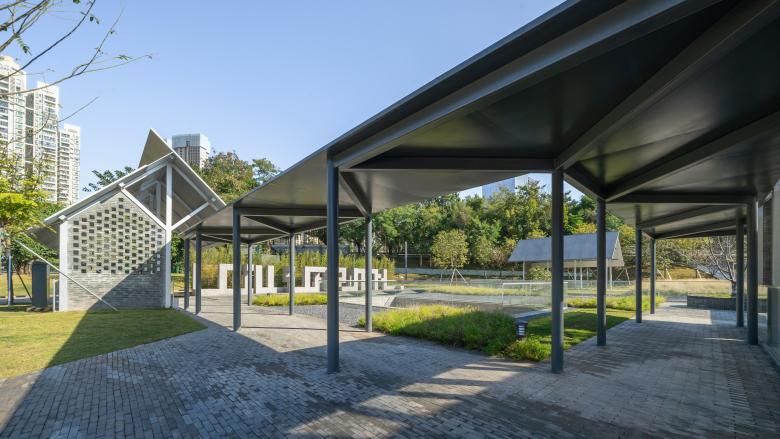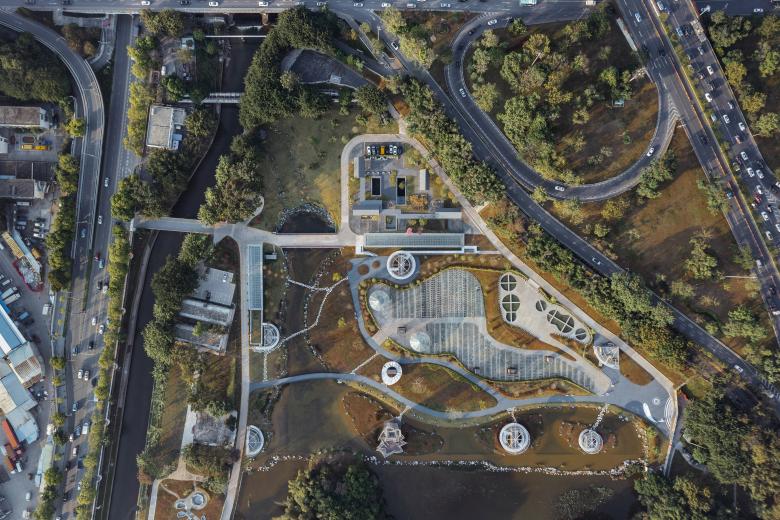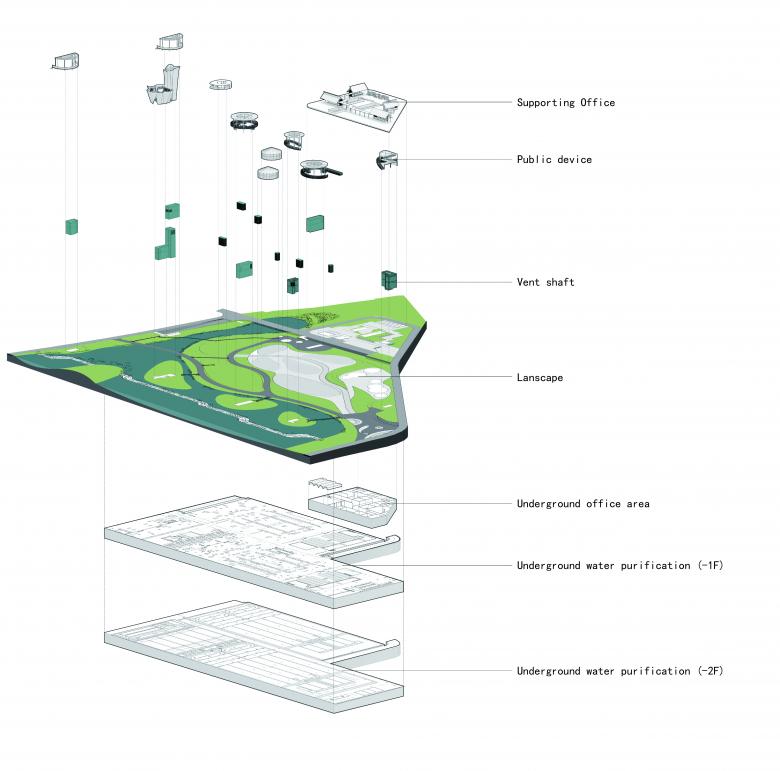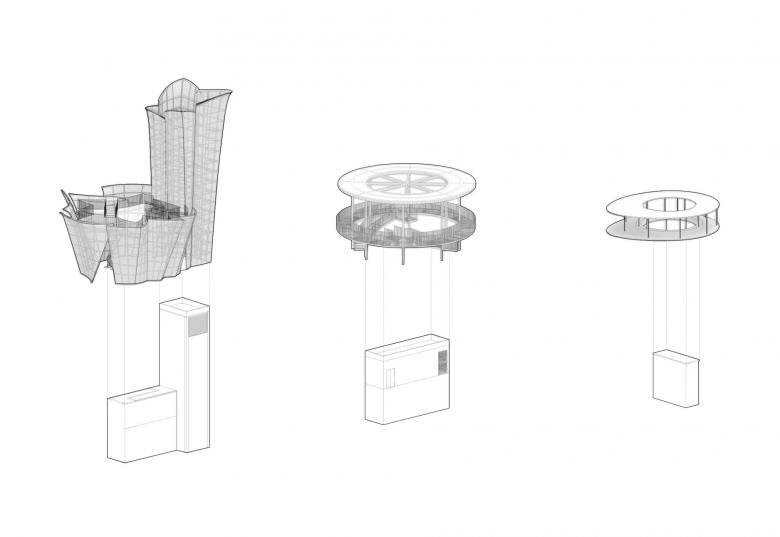Integrated Infrastructure and Recreational Uses
Eduard Kögel
20. July 2023
Vent shafts protruding from the ground (Photo: © NODE photographer, Zhang Chao)
In recent decades, the Shenzhen Special Economic Zone has developed into the fastest growing metropolis in the world. As a result, new ways of natural resource management are needed. Doreen Heng Liu and her office NODE were recently able to realise an unusual project: the integration of a sewage treatment plant with a public park.
An Urban Park on Top of a Fully-buried Water Treatment Plant (Photo: © NODE photographer, Zhang Chao)
Honghu Park was opened in 1985, making it one of the first public parks in the city. The park is loved locally for the egrets that live there, for its cypress forest and its lotus ponds. However, the rapid growth of the city has caused considerable water problems and in 2015, the administration announced a comprehensive plan to improve water quality in the city. This included the construction of a new underground sewage treatment plant in Honghu Park, the technical planning of which had already been completed by a general contractor when NODE was commissioned to design the surface level of the park and some underground offices. The logic of their design proposal needed to be coordinated with the existing technical plans for the treatment plant.
Vent shaft (Photo: © NODE photographer, Zhang Chao)
As the adjoining Buji River bursts its floods every year during the flood season, retention basins had to be designed for these recurring extreme events. During normal operation, treated water is discharged into the park’s ecosystem and the Buji River, to a planned capacity of 100,000 cubic metres per day. One of the design questions was how to depict the underground infrastructure and the retention systems in the park landscape and how new aesthetic images for the users could be created from this aspect. To this end, the ventilation and fire protection systems became important components visible in the park landscape, together with designed water surfaces.
Slow trail (Photo: © NODE photographer, Zhang Chao)
An additional challenge was meeting the different expectations of many client bodies in an integrative design: those of the government as commissioning body, the park authority, the operators and the users. The government wanted a balanced design adhering to the sponge city concept, the park authority needed areas for growing lotus plants, and the operators wanted to conceal the technical character of the sewage treatment plant with a natural image.
The ground landscape (Photo: © NODE photographer, Zhang Chao)
The architects focused on the issues raised by the technical design of such facilities and identified interfaces where public education through aesthetic images could create new experiential spaces for visitors. The underground, two-story water treatment plant poses its own challenges in terms of fire protection, drainage and ventilation of the rooms. Thirteen ventilation shafts, some with evacuation stairs, were planned for the treatment plant and had to be integrated into the landscape.
The highest vent shaft (Photo: © NODE photographer, Zhang Chao)
The architects developed abstracted versions of the pagodas, pavilions and corridors in the historic Lingnan Gardens in the region, and transformed these into contemporary architecture. For example, the vent shaft, the tallest architectural element at 16 metres, became a sculpture inspired by the park’s flagship lotus plant. Other shafts became bird-watching platforms, offering enthusiasts new opportunities to pursue their hobby. Smaller ventilation shafts were planted with greenery, thus strengthening spatial elements in the park.
Supporting Office Area — Ground garden Gallery (Photo: © NODE photographer, Zhang Chao)
In the northern area, the underground offices were extended with exhibition rooms to attract visitors so that information about wastewater treatment could be conveyed. An open courtyard was created with corridors, pavilions and sunken gardens inspired by tradition, but designed with today’s means to create an attractive place.
Overall aeriel (Photo: © NODE photographer, Zhang Chao)
The rapid growth and density of the city necessitated interventions that will be introduced elsewhere only in the future. In this way, Shenzhen continues to be a laboratory where innovative design solutions must be found for new questions that continually arise. The architects of NODE have formulated an offer to the urban society here that will surely soon be replicated in other places, since space is finite elsewhere too and challenges associated with urban growth will need new references. Above all, technical infrastructures should no longer be implemented without any design demands, as they usually tend to be. For in the extremely dense city different functions must overlap and in such a way that they enrich each other and become aesthetic attractions in the urban space.
Night view (Photo: © NODE photographer, Zhang Chao)
Location: Luohu District, Shenzhen, Guangdong, China
Construction Status: Completed
Lead Architects: Doreen Heng Liu / NODE
Design team: Doreen Heng Liu, Jiebin Huang, Zanning Huang
Client: Shenzhen Water (Group) Co., LTD
Program period: 2017–2021
Landscape: 32,400 sqm
Underground Supporting Office and Exhibition: 1760 sqm
Photographer: Zhang Chao

